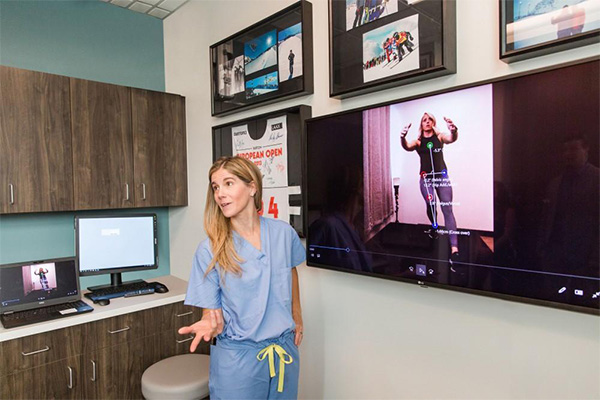
Rehabilitation following ACL Reconstruction (ACLR) involves a lengthy rehab process. Typical duration for rehabilitation and return-to-sport is approximately 9 to 12 months. Although treatment for this injury places a heavy focus on strengthening, there is no gold standard for the types of exercises necessary for full restoration of return to sport and/or function.
What leads to retear or inability to return to sport?
Decreased strength and poor (or compensatory) mechanics at the hip and knee are thought to predispose individuals to ACL re-injury by placing them in a position of risk.
Determination of a patient’s readiness to return to sport following ACLR isa complex decision involving both physical (quantitative and qualitative measures), as well as psychological readiness to return to play (RTP). This article will focus on the physical aspects of RTP.
Physical Testing
If the patient has regained full range of motion (ROM), improved strength comparable to the non-affected limb, and reports favorable outcome scores and no pain, some surgeons may suggest it is time to release to sport. However, we must consider more!
Dr. Logan & Functional Exercise Testing
Dr. Logan also includes reliable and valid measures to assess a patient's ability to return to sport & also focuses on identifying deficiencies specific to the needs of their sport.
Currently, a number of return-to-sport tests can be found in the literature and may be considered in the decision to return an athlete to sport. These include:
- PRO's or Patient’s self-reported outcomes
- Isokinetic strength testing
- Hop testing (single, triple, cross-over)
- Jump testing (drop jump, counter-movement, tuck)
- Balance testing (include Y-balance).
Is there one-best test?
In brief, no. The current best practice approach for return-to-sport testing is to include a measure of ROM, balance, strength, and power. In additiona, an athlete's neuromuscular control should be assessed. An example of this assessment is to interpret their quality of movement - how well does the athlete moves within the context of a given exercise, skill or task?. This assessment can be done formally through drop jumps, squat jumps and similar movements, and/or with the additional of assessment of vertical ground reaction forces and ankle, knee, and hip moments.
In summary, the final RTP decision requires multiple assessments performed over time that include both quantitative and qualitative movement studies. These tests are in addition to screening for psychological readiness, of course.






